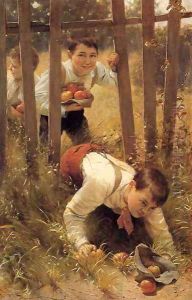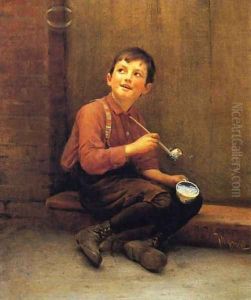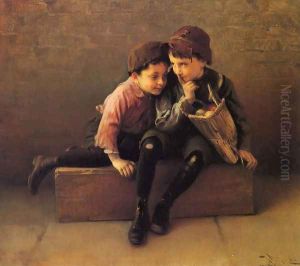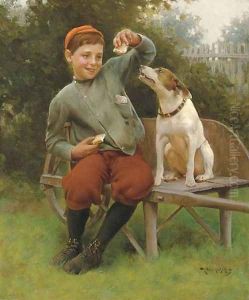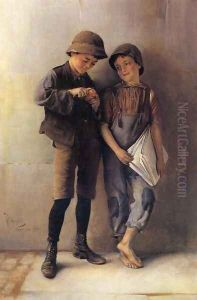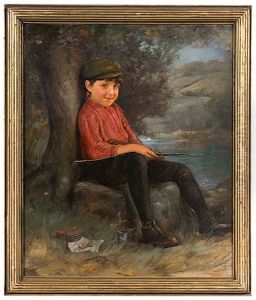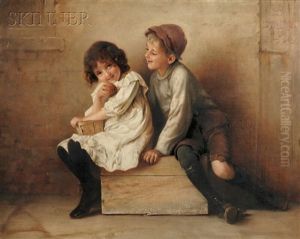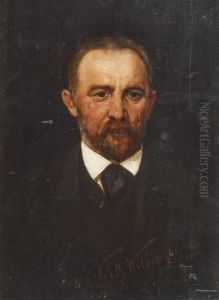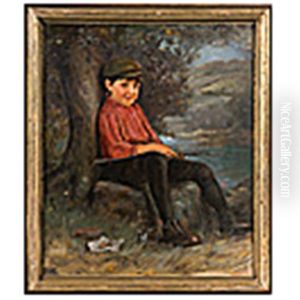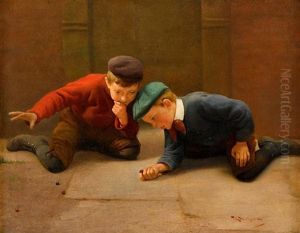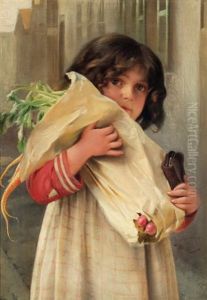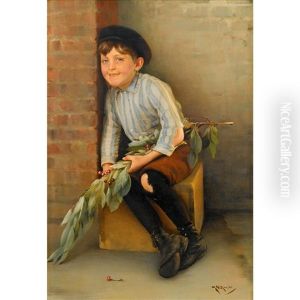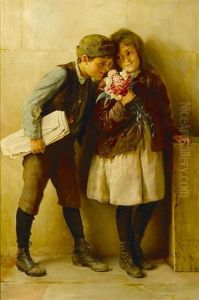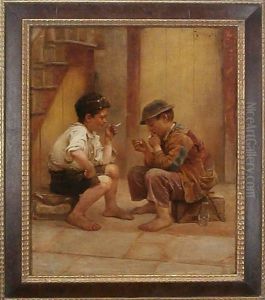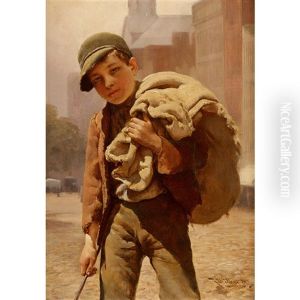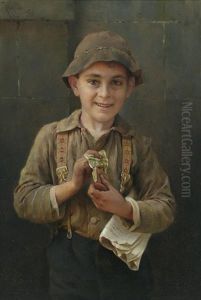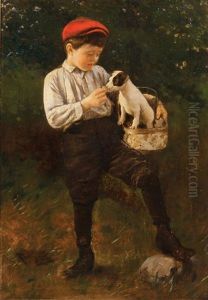Karl Witkowski Paintings
Karl Witkowski was a Polish-born American genre painter, known for his detailed and affectionate portrayals of street urchins and children at play in urban settings. Born in the year 1860, Witkowski developed his artistic skills in Europe before moving to the United States.
Witkowski began his artistic education in Germany and continued his studies in Paris, France, where he was influenced by the academic and genre painting traditions prevalent at the time. His work reflects an interest in the everyday lives of ordinary people, a theme that resonated with both the Realist and Naturalist movements of the late 19th century.
After moving to the United States, Witkowski settled in New York City, which became a primary subject of his paintings. His scenes of New York's streets and its inhabitants, especially the city's youth, are rendered with a combination of realism and sentimentality. He had a particular talent for capturing the expressions and body language of children, often depicting them in moments of play, work, or interaction with others.
Witkowski's paintings were well received and he exhibited at various institutions including the National Academy of Design and the Pennsylvania Academy of the Fine Arts. Despite his success, he remained dedicated to his subject matter, painting the lives of the less fortunate with empathy and respect.
Karl Witkowski's contribution to American genre painting is noteworthy for his focus on children and urban life at the turn of the century. His works provide a window into the social conditions and daily experiences of that era. He passed away in 1910, leaving behind a body of work that continues to be appreciated for its historical value and artistic merit.
